by Rabbi Jeffrey Adler
The 37th chapter of Ezekiel contains one of the most stirring and dramatic prophecies of all scripture. The prophet is dealing with great angst over the tragic judgments befalling the kingdom of Judah and the earlier destruction of the northern kingdom of Israel. Adonai gives him a vision sympathetic with this trauma.
In the vision, Ezekiel is transported by God’s Spirit to what is referred to as “the valley”. There is no way that one could not even discern identification of the valley; we might surmise it to be either the valley of Jezreel in Galilee, often called Armageddon, or, the Kidron Valley east of Jerusalem.
Ezekiel finds the valley blanketed with bones. He walks around “ saviv, saviv”- round and round, apparently, looking for any survivors, commonly done when there has been a disaster such as an earthquake, volcano, tsunami, or the like. The bones are apparently so scattered that one could not discern anything about the identities of the victims- total annihilation.
As Ezekiel ponders this scene, Adonai poses a question- “Son of man, hatchyeynnah”- generally translated, “can these bones live?” This is not unreasonable, but, the verb to be able is not in the text. I prefer to render it, “do these bones live?” The question addresses the capacity of the Lord to do something about what the prophet is witnessing.
The prophet, though traumatized by the devastation, sees hope. He responds, ”Adonai, attah yadata””; Lord, You know. The word “you” is superfluous unless there for emphasis, here referring to the Lord’s unique power to restore Israel from catastrophe. “Yadata”- Ezekiel You know, is in the perfect tense, which sees the verbal action as one point on the time line, thus making it very decisive. “Lord, You definitely are intimate with this situation and on top of it.”
Adonai then tells the prophet to prophesy to the bones. The verb to prophesy occurs in scripture in the niphal stem, or passive voice. The clear implication is that Ezekiel, himself, is not the source of the message- it is not his own wishful thinking-, but, he is receiving it from the Lord. He tells the bones to hear the Word of the Lord- the answer in every circumstance. The bones, in response, start flying together, joining together, forming muscle, skin, and hair. The identity-less blobs from before now show some identity.
Still, there is no life, no breath. God, again, instructs Ezekiel to prophesy, calling for “ruach”-breath, wind, or spirit- to enter the lifeless forms. Ruach comes, enters them, and, they stand on their feet, a great army. Lifeless bones are now a mighty force with which to be reckoned. The Lord says the people will now “know that He is the Lord”. “Yada”, to know means intimate knowing. Israel will know in faith and real knowledge.
All of this is meant to address the apparent hopeless situation of Israel. The Lord describes the bones as representative of the discouraged condition of the Jewish people in the aftermath of the many disasters of Jewish history-the pogroms, Inquisition, the Holocaust, et. al. They say that God has abandoned them, but, God has other ideas- resurrection and restoration. Many generally fine Bible students over the years succumbed to the temptation of the Jewish tragedies to spiritualize the promises to Israel and transfer them to the Church. However, though it seemed so unlikely in human terms against the backdrop of history, on May 14, 1948, Ezekiel’s vision became historical reality and Israel became a state again. It is so important, in this day when so many international bodies seek to delegitimize Israel, that God has the last word. The best is yet to come!
Rabbi Jeffrey Adler is president of the Board of HaShomer and also Rabbi of Sha’arey Yeshua in Indianapolis, IN.
